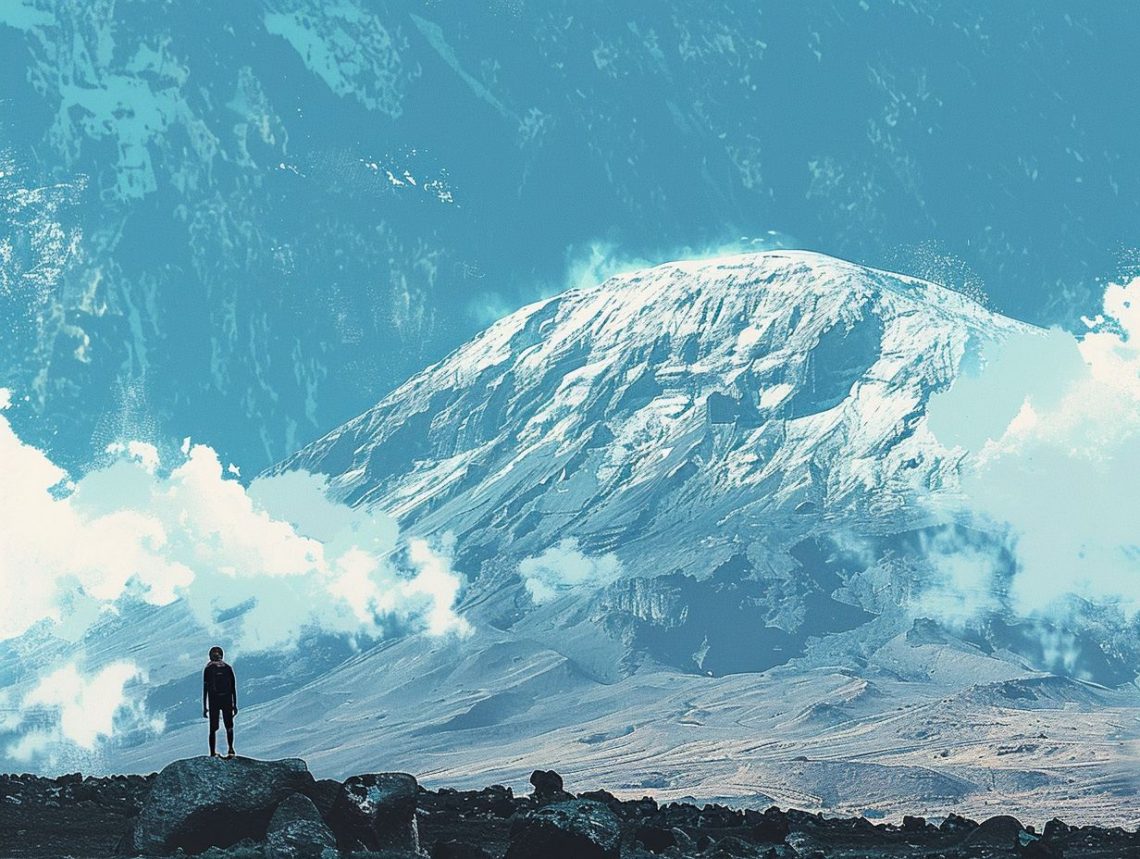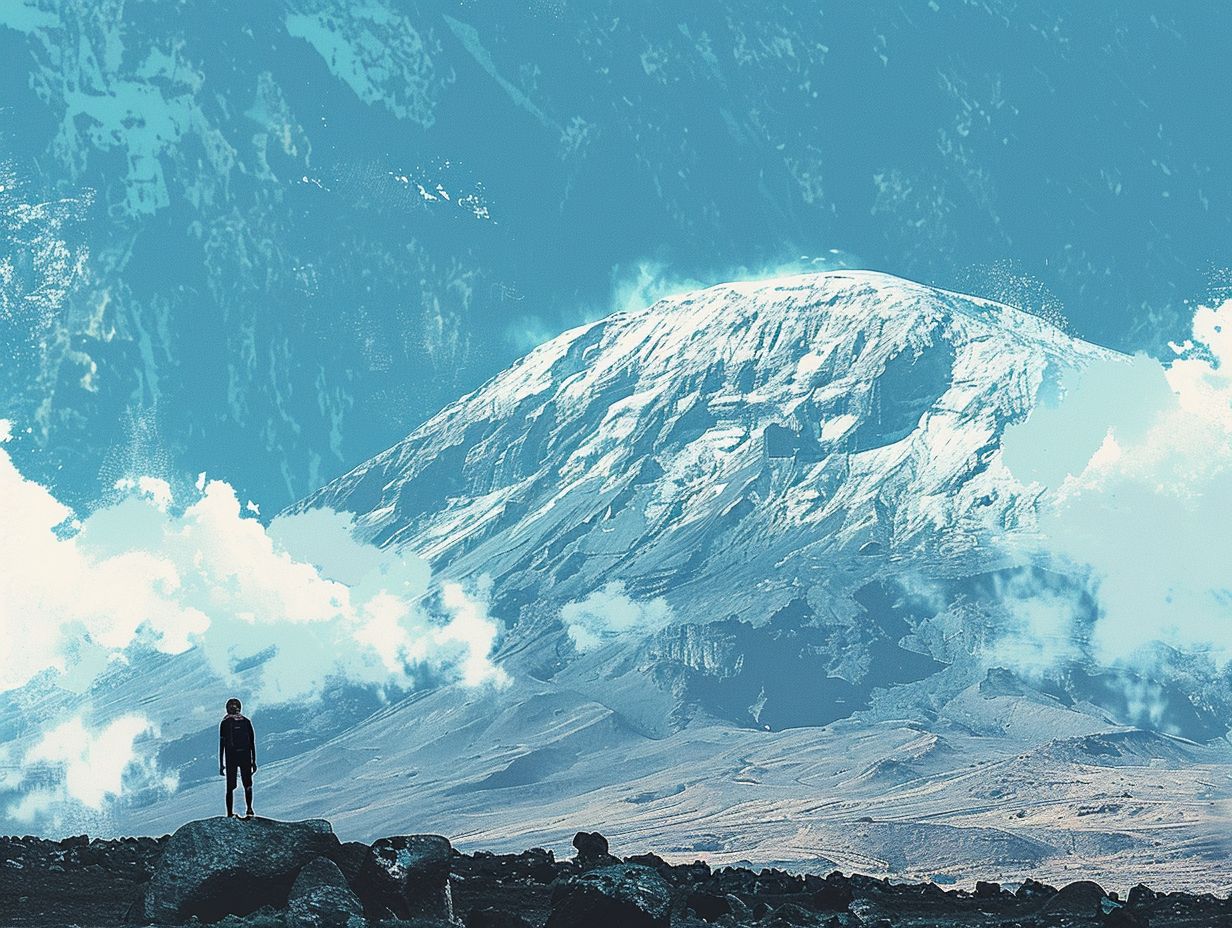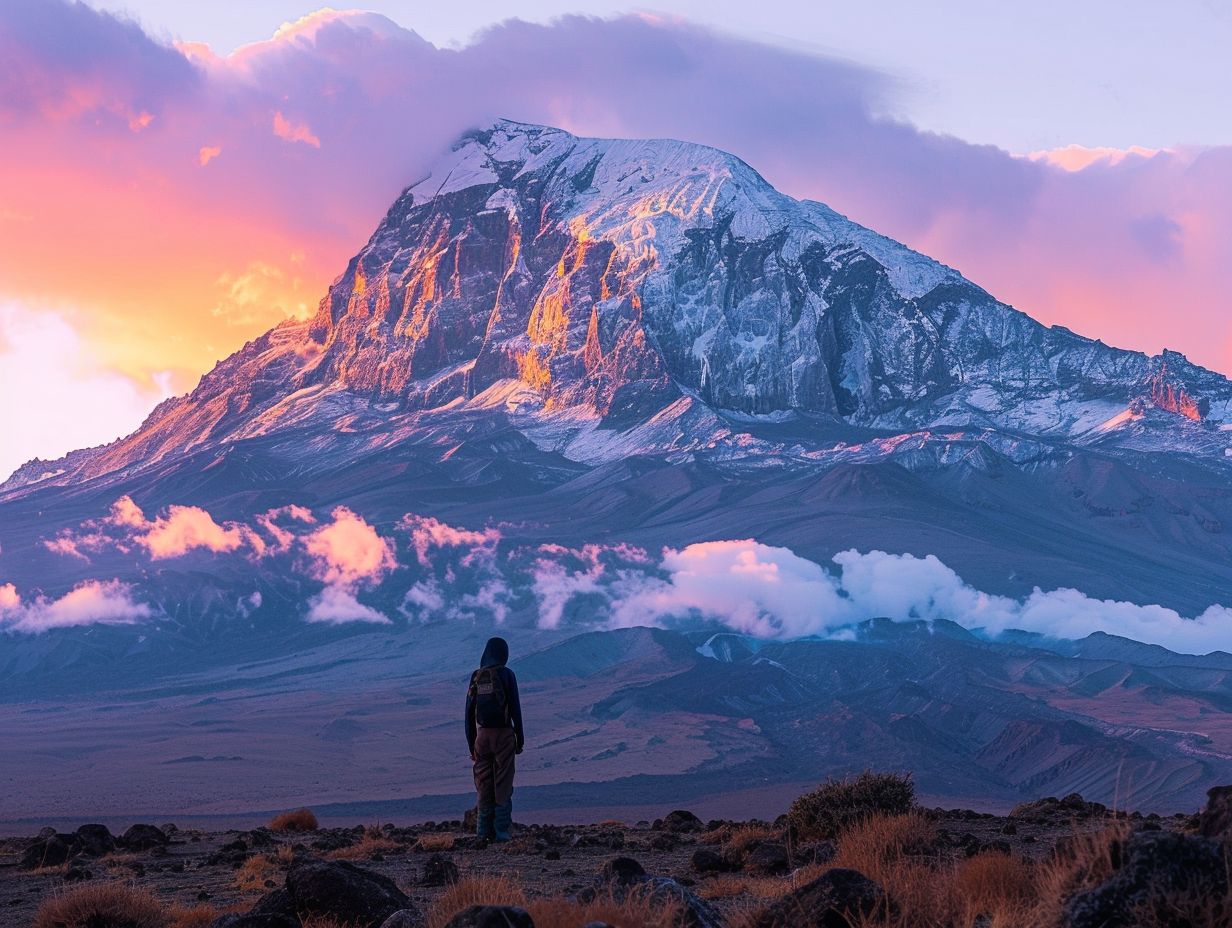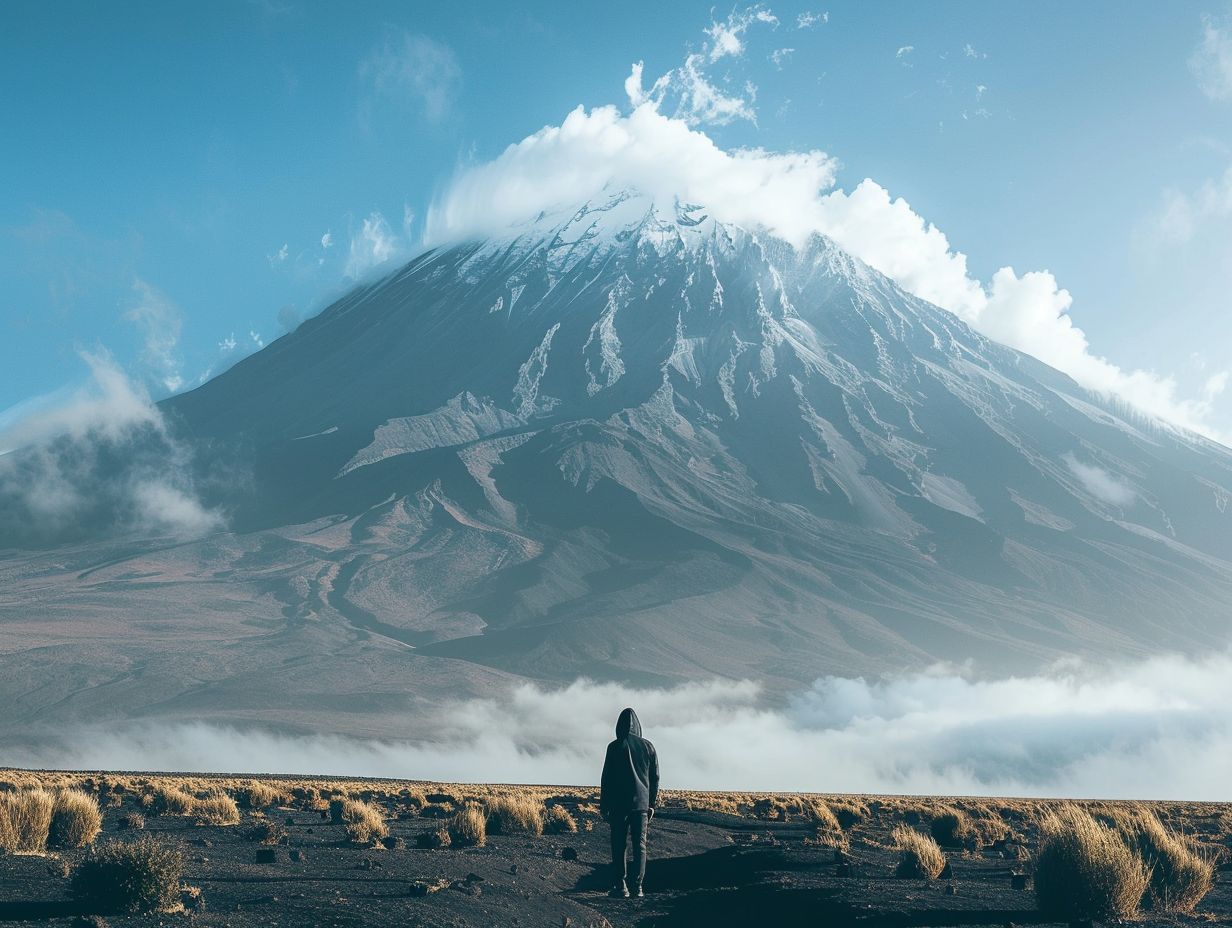
Climbing Kilimanjaro With No Training
Are you considering climbing Mount Kilimanjaro but have no training? This article will guide you through all the essential information you need to know before embarking on this adventure.
From the physical requirements and risks of climbing without training to the necessary preparations and gear, we will cover it all.
Join us as we explore the challenges, both physical and mental, of climbing Africa’s tallest peak with no prior experience. Let’s get started!
Key Takeaways:

- Climbing Kilimanjaro with no training is not advisable due to the physical and mental challenges involved.
- Necessary preparations such as physical conditioning and acclimatization should be done to ensure a safe and successful climb.
- Essential gear and equipment, as well as proper clothing, are crucial for a comfortable and safe climb.
What Are the Physical Requirements for Climbing Mount Kilimanjaro?

Climbing Mount Kilimanjaro demands a good level of physical fitness and endurance due to its high altitude and challenging terrain. Adequate training and preparation are essential to tackle the demands of the climb.
Cardiovascular fitness plays a crucial role in preparing the body for the strenuous journey ahead. Long hours of walking at high altitudes require a strong heart and lungs to efficiently oxygenate the body.
Endurance is key as climbers face long hours of trekking each day, often for consecutive days, making it imperative to build up stamina and mental fortitude to combat fatigue and ensure a successful ascent.
Walking regularly and incorporating uphill climbs into training regimes can greatly help in preparing for the elevation changes faced when climbing the majestic Kilimanjaro.
Is It Possible to Climb Mount Kilimanjaro With No Training?
While it is technically possible to climb Mount Kilimanjaro without prior training, it is highly discouraged due to the physical demands and risks associated with high altitude trekking.
Attempting Kilimanjaro without proper physical preparation can lead to a multitude of challenges that may escalate quickly as altitude increases.
Acclimatization, the process of adjusting to higher altitudes, is vital to prevent altitude sickness, which can present symptoms ranging from headaches and nausea to more severe conditions.
Underestimating the climb by disregarding the necessity of gradual adaptation to altitude and physical strain can put climbers at serious risk.
It is essential to respect the mountain, understand one’s limits, and take the necessary precautions to ensure a safe and successful ascent.
Properly preparing for the Kilimanjaro trek not only enhances the chances of reaching the summit but also contributes to a more enjoyable and memorable experience amidst the breathtaking African landscapes.
What Are the Risks of Climbing Mount Kilimanjaro With No Training?
Climbing Mount Kilimanjaro without adequate training increases the risk of altitude sickness, fatigue, and injuries due to the strenuous nature of the ascent.
At an elevation of 19,341 feet, Kilimanjaro poses numerous challenges to climbers who underestimate its difficulty.
The higher you climb, the thinner the air becomes, leading to altitude-related illnesses like Acute Mountain Sickness (AMS) and potentially fatal High Altitude Pulmonary Edema (HAPE) and High Altitude Cerebral Edema (HACE).
The physical strain of navigating steep terrain and enduring extreme weather conditions can take a toll on even the most experienced hikers. Proper fitness levels are crucial to endure the grueling multi-day trek and reach the summit safely.
What Are the Necessary Preparations for Climbing Mount Kilimanjaro With No Training?
For those attempting to climb Mount Kilimanjaro without prior training, thorough preparation, including mental readiness, acquiring necessary gear, and understanding the route.
Before embarking on the journey to conquer the majestic Mount Kilimanjaro, climbers should focus on developing mental resilience to cope with the physical and emotional challenges that the climb presents.
In terms of gear selection, climbers must prioritize choosing suitable equipment such as sturdy hiking boots, proper clothing for varying climates, and a reliable backpack.
Having the right gear can significantly enhance comfort and safety throughout the expedition.
Familiarizing oneself with the different trails, campsites, and acclimatization points can help climbers make informed decisions during the ascent, minimizing the risk of altitude-related issues like Acute Mountain Sickness (AMS).
What Are the Essential Gear and Equipment for Climbing Mount Kilimanjaro?
Proper gear and equipment are vital for a successful Kilimanjaro climb, including warm clothing, sturdy boots, and essential items that cater to the mountain.
Hiking experts recommend a moisture-wicking base layer, insulating mid-layer, and a waterproof outer shell to handle unexpected weather conditions.
Quality hiking boots with good ankle support are a non-negotiable requirement to prevent slips and protect your feet on rocky terrain.
In addition, a reliable headlamp is a must-have for navigating the trails during early morning starts or late-night descents.
Kilimanjaro guides often stress the importance of these elements to ensure climbers’ safety and comfort throughout the expedition.
What Are the Recommended Clothing for Climbing Mount Kilimanjaro?

When preparing for a Kilimanjaro climb, it is essential to have appropriate clothing, including moisture-wicking base layers, insulating mid-layers, and waterproof outer shells.
Layering your clothing is crucial to regulate body temperature while ascending Kilimanjaro. The layering system allows you to add or remove clothing as needed.
- Start with a moisture-wicking base layer to keep sweat away from your skin.
- Follow it up with insulating mid-layers like fleece or down jackets to trap heat.
- The outer shell should be waterproof and breathable to shield you from rain or snow.
Along with clothing, investing in quality gear like gloves, hats, and sunglasses is beneficial for protection against the sun’s harsh glare and cold winds.
As you ascend, the terrain changes rapidly, requiring sturdy footwear like insulated boots with good traction to navigate rocky paths and unstable ground.
What Are the Must-Have Items for Climbing Mount Kilimanjaro?
Certain essential items are crucial for climbers attempting Mount Kilimanjaro, such as high-altitude medications, blister prevention supplies, hydration systems, and trekking poles to aid in stability and reduce the risk of injuries.
A sturdy and well-fitted pair of hiking boots is a non-negotiable for navigating the challenging terrain.
Carrying adequate clothing layers is vital to combat the varying weather conditions encountered during the climb, ensuring both comfort and safety.
A hydration system that facilitates easy access to water is essential for maintaining energy levels and preventing altitude sickness.
For make the journey more enjoyable, carrying snacks high in energy and nutrients would be highly beneficial for sustenance during the climb.
What Are the Challenges of Climbing Mount Kilimanjaro With No Training?
Embarking on a Kilimanjaro climb without adequate training presents numerous challenges, testing climbers’ endurance, mental resilience, and physical capabilities in navigating the mountain’s demanding terrain and high altitude conditions.
What Are the Physical Challenges?
The physical challenges of climbing Mount Kilimanjaro without training include altitude sickness, fatigue, muscle strain, and the demanding trekking conditions that test climbers’ endurance and stamina throughout the ascent.
Altitude-related ailments, such as headaches, nausea, and shortness of breath, can hamper climbers’ progress, making each step a struggle as they adjust to the thin air.
Muscle fatigue sets in from the continuous uphill climb, especially on the steeper sections, where the body’s resources are pushed to the limit.
The endurance required to traverse Kilimanjaro’s steep slopes and long trekking distances through varying terrains is not only physical but mental.
What Are the Mental Challenges?
The mental challenges of attempting Kilimanjaro without training involve coping with altitude-induced stress, self-doubt, and psychological barriers that can impact climbers’ decision-making and overall experience on the mountain.
As climbers ascend the rugged terrain, the thinning air at higher altitudes triggers altitude-induced anxiety, causing shortness of breath, headaches, and disorientation.
The looming presence of the summit adds to the pressure, pushing climbers to their limits both physically and mentally.
Without the necessary mental fortitude, even the most physically fit individuals can struggle to overcome these challenges.
The unpredictable nature of the mountain tests not only endurance but also mental resilience, requiring climbers to dig deep within themselves to find the strength to push forward.
Conclusion

Climbing Mount Kilimanjaro is a remarkable and unforgettable journey that demands physical preparation, mental resilience, and a spirit of adventure to conquer its challenges and bask in the glory of reaching the summit.
Ascending the majestic peak provides a sense of accomplishment like no other. The journey tests your physical limits and offers a chance for personal growth.
Preparation is key to tackling the altitude and harsh conditions that come with the climb.
Experienced guides play a crucial role in leading climbers safely through the various routes, ensuring a safe and enjoyable experience.
Frequently Asked Questions
1. Can I climb Kilimanjaro with no training?
A: Yes, it is technically possible to climb Kilimanjaro with no training, but it is not recommended. Climbing Kilimanjaro is a strenuous and challenging trek that requires physical fitness and endurance. Without proper training and preparation, you may put yourself at risk for injury or health complications.
2. What kind of physical training is recommended for climbing Kilimanjaro?
A: Ideally, you should engage in regular aerobic exercises such as running, cycling, or hiking to build endurance and cardiovascular fitness. Additionally, strength training and core exercises can help improve your overall fitness and prepare your body for the demands of the climb.
3. How long does it take to train for climbing Kilimanjaro?
A: The recommended timeframe for training for a Kilimanjaro climb is 3-6 months. This will allow you to gradually increase your fitness level and build the necessary endurance for the trek. However, the length of training may vary depending on your current fitness level and individual goals.
4. What kind of gear do I need for climbing Kilimanjaro with no training?
A: Regardless of your training, it is important to have proper gear for a safe and successful Kilimanjaro climb. This includes high-quality hiking boots, warm and waterproof clothing, a headlamp, trekking poles, and a sleeping bag. It is also recommended to bring altitude sickness medication and a first aid kit.
5. Are there any risks of climbing Kilimanjaro with no training?
A: Yes, there are several risks associated with climbing Kilimanjaro with no training. These include altitude sickness, physical injuries, and other health complications. It is important to listen to your body and know your limits to avoid these risks. It is also recommended to consult with a doctor before attempting the climb.
6. Can I hire a guide or join a group if I have no training for climbing Kilimanjaro?
A: Yes, it is highly recommended to hire a guide or join a guided group if you have no training for climbing Kilimanjaro. A guide will not only provide support and assistance during the climb, but also help with logistics and safety measures. Joining a guided group can also provide a sense of community and motivation during the trek.